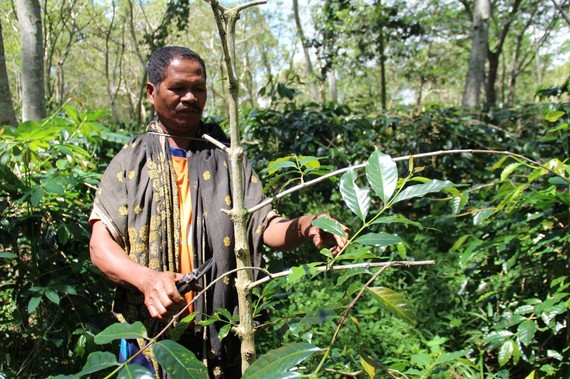By Kat Fiske
The struggle of small-scale coffee farmers is not news to anyone in the industry. A quick Google search of the term "coffee farmers" yields pages of results with various iterations of the same message - coffee farmers are barely breaking even.
We are familiar with the statistic that coffee farmers typically earn less than 10 percent per pound of the retail value for their coffee. And we understand that the added costs of agricultural inputs (like fertilizer), cooperative fees and middlemen further cut into what measly profit farmers can pocket from the sale of their beans. We know all this, and yet, we are not translating that knowledge into widespread, meaningful change for the world's coffee farmers, who continue living in poverty despite the industry's growth.
This is not to say important change is not happening. That same Google search would also bring up websites and articles discussing Fair Trade, direct trade and impact investing, all of which can increase farmers' profit margins under the right circumstances. Coffee corporations also invest in social responsibility departments and foundations that aim at helping impoverished farmers, so there is an obvious drive in the industry to make a difference. But the fact of the matter is this: those efforts alone are just not enough to move the needle from farmer poverty toward farmer prosperity.
Coffee farmers today - especially those farming on small plots of land - face a myriad of challenges, all of which must be addressed if they are to break out of their cycles of poverty:
-Most coffee farmers do not earn enough to provide sufficient food for their families year round and have no savings, credit, insurance or alternate sources of income to compensate for when their coffee harvest is poor or the market price is low.
-The altitude at which coffee is best grown typically requires farmers to live in remote areas with difficult, mountainous terrain, which limits their access to markets and forces them to sell their beans at lower prices to middlemen, who have the means to transport their beans to buyers.
-Many coffee cooperatives suffer from weak management, allowing biases and traditional power dynamics to limit how much farmers benefit from their membership.
-Coffee farmers are also contending with climate change, which is negatively affecting their production in a variety of ways. Increasing temperatures have fueled the dramatic spread of la roya (coffee leaf rust), the shrinking of land area suitable for growing coffee, and the frequency of severe weather.
-Lack of training on climate smart and environmentally sustainable agriculture practices as well as a general lack of clean water reduces the quality and quantity of their coffee harvests and contributes to environmental degradation.
In addition to all this, coffee farmers are also aging. On average, they are in their mid to late fifties, and their children are not planning to follow in their footsteps, instead looking to more profitable work in urban areas. This brings up a host of questions about the sustainability of the coffee industry itself. If coffee farming doesn't become profitable, what incentive is there for youth to stay? And if the youth don't stay, who will be growing coffee in 20 or 30 years?
If farmers don't have access to the proper equipment and knowledge of environmentally sound agriculture practices, where will farmers even grow coffee once the land has gone bad? In addition to the humanitarian imperative, addressing these problems now and ensuring that coffee farmers prosper today will increase the sustainability and quality of the world's coffee supply for decades to come.
To effectively tackle these complex challenges, we need to develop long-term, multi-faceted, dynamic, and context-appropriate socio-economic and ecosystem approaches. We must widen the focus of programs designed to help farmers, and we must make them more holistic. We must weave together single-approach initiatives, like price guarantees, with activities aimed at improving the social, economic and environmental realities in which farmers live and work. To ensure effective program design and execution, we must rigorously plan, implement, monitor and evaluate these programs to make sure they are meeting objectives, and we must make adjustments when they are not.
Perhaps it goes without saying that these types of programs are difficult to put together, pay for and pull off. This is where public and private sector private sector partnerships can be extremely beneficial. Working together, each can build on the efforts and strengths of the other to help farmers in a big way. Such complex programs require the coffee industry's substantial resources, product expertise and market connections to reach many farmers over multiple years with high quality, technical livelihood support. These programs also need the vital local knowledge, culturally sensitive relationships, and experience in sound development practice found in the humanitarian sector to ensure contextually appropriate activities are diligently implemented and monitored at the farmer level.
Greater partnerships between the coffee industry and development organizations have the potential to bring the scale, depth and analysis necessary to more fully address the complex challenges of farmers. Some such partnerships exist today to a limited degree, but there needs to be more to make a lasting difference in the lives of coffee farmers, their families and communities.
If we ever hope for our efforts to significantly move that needle, these private-public partnerships must become the new norm in the industry's approach to ensuring the prosperity of its coffee farmers.
This article originally appeared in CoffeeTalk magazine's December 2016 issue.

